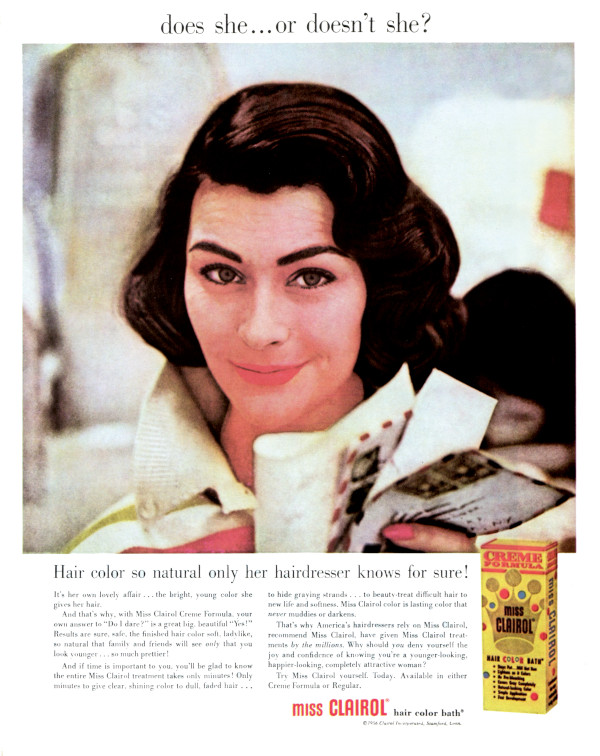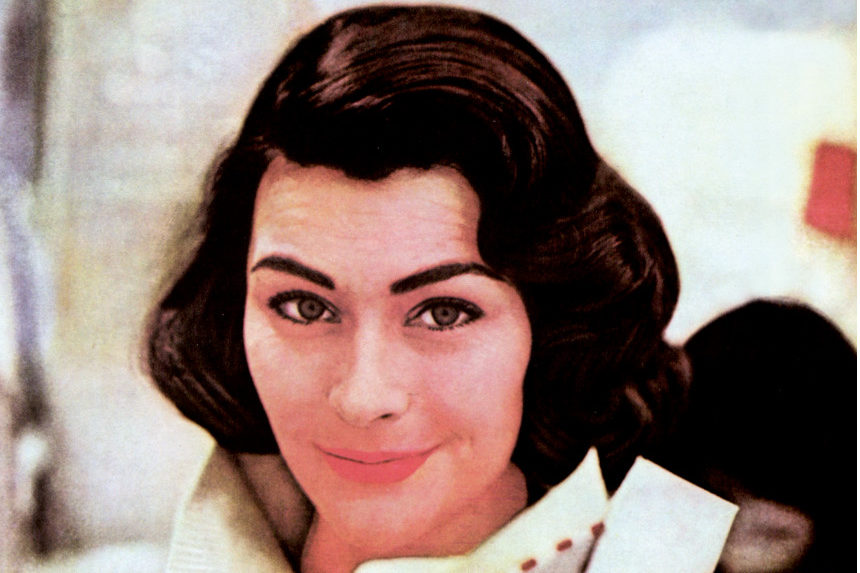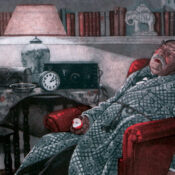In 1957, the makers of Miss Clairol Hair Color Bath asked women if they’d ever colored their hair. Only 7 percent answered “yes.” There was a stigma attached to dyeing hair in those days. A woman who did so was seen as exhibiting an unladylike vanity and possibly questionable morals.
But that same year Clairol introduced a coloring product they could apply in the privacy of their own homes. A massive — and massively successful! — ad campaign claimed the dye was so natural looking, “only your hairdresser will know for sure.”
The produce launch was well-timed; women of the 1950s were emerging from an era of conformity into a decade that emphasized individuality and self-expression. Which is why, when Clairol polled women about hair coloring a little more than 10 years later, half replied in the affirmative. In fact, women were changing hair color so readily in the late ’60s that some states stopped asking women to record the color of their hair on the driver’s licenses.

This article is featured in the March/April 2022 issue of The Saturday Evening Post. Subscribe to the magazine for more art, inspiring stories, fiction, humor, and features from our archives.
Become a Saturday Evening Post member and enjoy unlimited access. Subscribe now




Comments
I love the old Edison Mazda Ads! I have a print of Norman Rockwell’s “Every Lad can be an Aladdin” one in my bedroom. They had wonderful style back then!
What a great feature I hadn’t gotten to in the March/April issue yet. Didn’t realize “Does she or doesn’t she?” and I are the same age. My mother refused to ever let one gray show—ever! Even in her 80s when she was “out of it” mentally due to Parkinson’s, she made sure she had that hair treatment every week or 2 weeks? When I’d come to visit at the ‘home’ and she didn’t know who I was, she’d ask for a mirror which I brought so she could see herself and smile.
I always said “You look beautiful Mom” trying to smile and not let her see me cry. I had to bring out my actor side ‘A’ game not to, but you can only do that for so long. I knew when to make my excuse to leave, then lose it immediately outside in the hall.